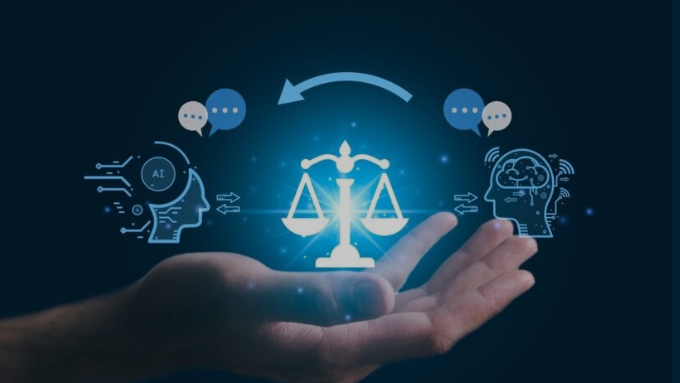How AI is Transforming Business IT
Artificial Intelligence (AI) is no longer just a futuristic concept—it’s a present-day powerhouse that’s rapidly reshaping the business IT landscape. From enhancing data analytics to automating routine tasks, AI is transforming the way organizations operate, make decisions, and deliver value to customers. As digital transformation becomes a strategic priority for enterprises worldwide, understanding the role of AI in business IT is essential.
In this comprehensive article, we’ll explore how AI is revolutionizing business IT, driving innovation, improving efficiency, and unlocking new opportunities for growth. Whether you’re an IT leader, a business strategist, or a tech enthusiast, this guide will help you navigate the AI-driven future of business technology.
1. AI in Business IT: The New Digital Backbone
AI is no longer a niche technology reserved for tech giants. Today, businesses of all sizes are integrating AI into their IT ecosystems to enhance productivity, streamline operations, and boost competitiveness.
AI technologies like machine learning (ML), natural language processing (NLP), computer vision, and predictive analytics are becoming foundational to IT systems. These tools empower companies to make smarter decisions, automate repetitive tasks, and detect problems before they escalate.
Key AI Trends in Business IT:
Intelligent automation
AI-powered analytics
Self-healing IT infrastructure
Personalized user experiences
Enhanced cybersecurity

2. Intelligent Automation: Doing More With Less
One of the most transformative impacts of AI on business IT is intelligent automation. Unlike traditional automation, which follows predefined rules, intelligent automation leverages AI to learn and adapt.
Use Cases:
IT Helpdesk Automation: AI chatbots and virtual assistants handle common support queries, reducing workload and improving response times.
Automated Network Monitoring: AI tools proactively identify and fix network issues, ensuring uptime and performance.
Software Testing: Machine learning algorithms can automate and optimize testing processes, improving software quality and reducing development cycles.
By implementing AI-driven automation, businesses can reduce operational costs, minimize errors, and free up human resources for more strategic tasks.

3. Data-Driven Decision Making With AI Analytics
In today’s digital economy, data is the new oil—and AI is the engine that refines it. AI-powered analytics platforms can process massive amounts of structured and unstructured data in real time, delivering actionable insights that drive smarter decision-making.
Benefits of AI Analytics in Business IT:
Predictive Maintenance: AI can forecast when hardware or software is likely to fail, preventing downtime.
Customer Behavior Analysis: AI tools analyze customer data to identify trends and personalize services.
Fraud Detection: Financial institutions use AI to detect anomalies and flag potential fraudulent activities in milliseconds.
Businesses that leverage AI for data analytics gain a competitive edge by being able to react quickly to changes and optimize performance continuously.

4. AI and Cybersecurity: Smarter Defense Mechanisms
As cyber threats become more sophisticated, traditional security measures are no longer sufficient. AI brings a new level of intelligence and agility to cybersecurity.
AI in Cybersecurity:
Threat Detection: AI algorithms can analyze network behavior to detect threats before they cause damage.
Incident Response: AI-driven tools can automatically isolate affected systems and begin recovery procedures.
User Behavior Analytics (UBA): Machine learning identifies deviations from normal behavior, helping to prevent insider threats.
By integrating AI into their cybersecurity frameworks, businesses can stay ahead of attackers and protect sensitive data more effectively.

5. Enhanced IT Infrastructure Management
Managing IT infrastructure—servers, networks, databases, and applications—can be complex and resource-intensive. AI simplifies this by enabling self-optimizing and self-healing systems.
Examples of AI in IT Infrastructure:
Dynamic Resource Allocation: AI can allocate cloud resources based on real-time demand, optimizing performance and cost.
Anomaly Detection: Machine learning models detect irregular patterns that may indicate system failures or inefficiencies.
Capacity Planning: AI predicts future resource needs, helping businesses plan IT investments proactively.
This smart infrastructure management ensures higher uptime, improved performance, and reduced operational costs.

6. AI-Powered Customer Service and IT Support
Customer expectations are higher than ever. They demand fast, personalized, and efficient support. AI is helping businesses meet these expectations through tools like virtual assistants, chatbots, and automated service desks.
How AI is Transforming IT Support:
24/7 Availability: AI-driven support systems can operate around the clock without fatigue.
Multi-language Support: NLP allows bots to communicate in multiple languages, enhancing global service capabilities.
Smart Routing: AI can triage tickets and route them to the right department or technician automatically.
The result is a smoother customer experience, higher satisfaction, and lower support costs.

7. Boosting Productivity Through AI Integration
AI isn’t just transforming IT operations; it’s elevating employee productivity across all departments. From AI-powered digital assistants that manage calendars to tools that write code or generate content, AI is reshaping the modern workplace.
Productivity Tools Enhanced by AI:
Microsoft Copilot & Google Duet AI: Help users write emails, create reports, and analyze spreadsheets.
AI in Project Management: Predict delays, optimize task allocation, and improve collaboration.
Low-code/No-code Platforms: Empower non-technical users to build apps using AI-generated templates and logic.
By integrating AI into daily workflows, businesses can enhance efficiency, reduce burnout, and accelerate innovation.

8. AI and Cloud Computing: A Powerful Synergy
The rise of cloud computing has been a key enabler of AI adoption in business IT. Cloud platforms provide the infrastructure needed to run complex AI models and store vast amounts of data.
How Cloud + AI Benefit Business IT:
Scalability: Instantly scale AI workloads based on demand.
Accessibility: Access AI tools from anywhere, enabling remote work and global collaboration.
Cost-Efficiency: Pay-as-you-go models reduce the need for heavy upfront investments.
Cloud-based AI services from providers like AWS, Google Cloud, and Microsoft Azure make advanced technologies accessible even to small and medium-sized businesses.

9. Challenges and Ethical Considerations
While the benefits of AI in business IT are significant, there are also challenges and risks to consider.
Key Concerns:
Data Privacy: AI systems rely on data, raising concerns about how information is collected, stored, and used.
Bias in AI Models: Poorly trained models may reflect or amplify human biases.
Job Displacement: Automation may reduce demand for certain roles, requiring workforce reskilling.
Businesses must adopt AI responsibly, with transparent policies, ethical frameworks, and continuous oversight to ensure fair and equitable use.

10. The Future of AI in Business IT
Looking ahead, the integration of Generative AI, Edge AI, and Explainable AI (XAI) will further revolutionize business IT.
What’s Next:
Generative AI: Tools like ChatGPT and Claude will assist in content creation, software development, and customer service.
Edge AI: Real-time decision-making at the edge will enable faster response times in IoT and mobile applications.
Explainable AI: Enhances trust by making AI decisions understandable to humans, critical for compliance and governance.
As these technologies mature, AI will become not just a tool but a strategic partner in IT and business operations.

Final Thoughts
AI is more than just a technological upgrade—it’s a transformative force that’s redefining the entire business IT ecosystem. From automation and analytics to security and customer experience, AI is driving unprecedented changes that improve agility, efficiency, and innovation.
To stay competitive, businesses must embrace AI strategically, ensuring that its implementation aligns with their goals, values, and customer expectations. The future belongs to those who are not just digitally ready, but AI-ready.
So, whether you’re optimizing your IT helpdesk, fortifying your cybersecurity, or diving into predictive analytics, the time to harness the power of AI is now.
